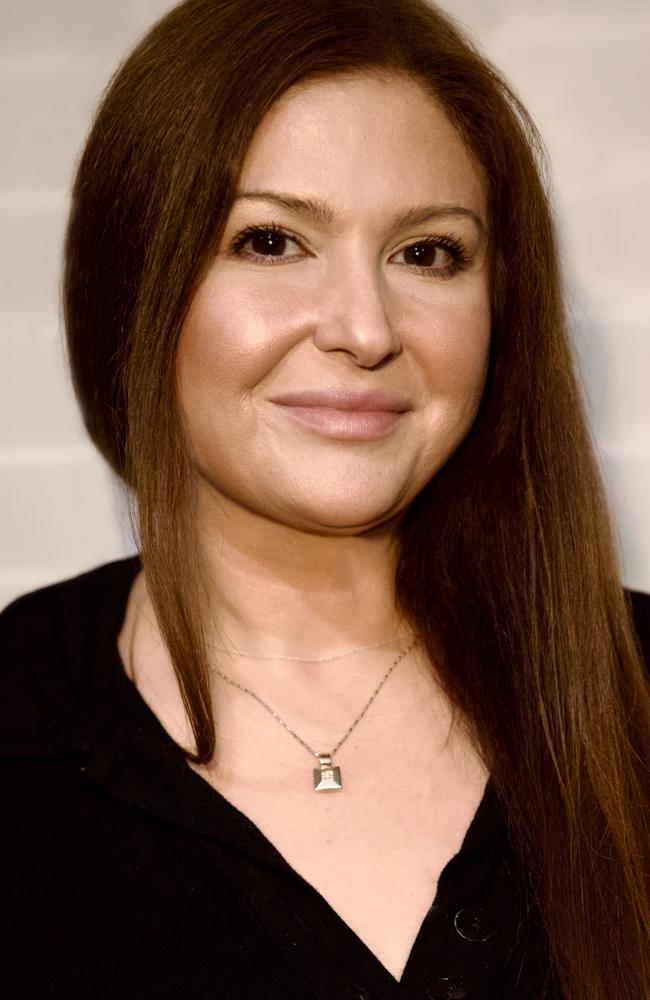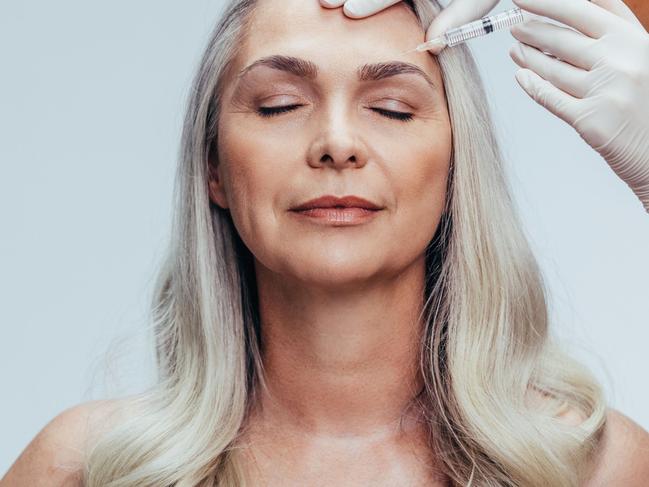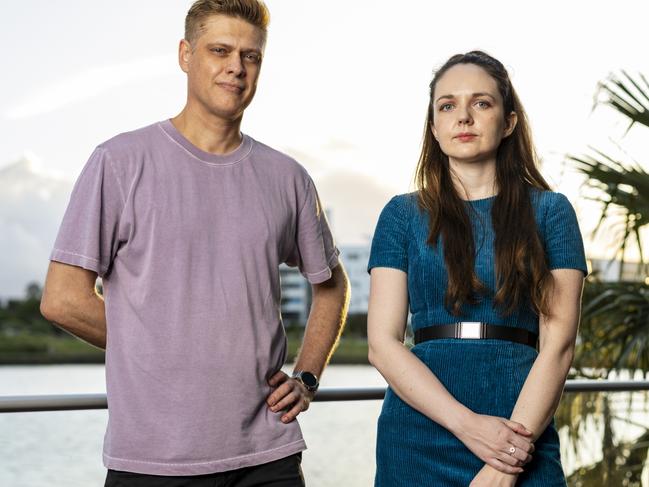How much you’ll pay for Botox in your suburb amid warning over cheap deals: FULL LIST
We’ve investigated prices at 430 clinics that offer anti-wrinkle injections to show how much the cost can vary. It comes amid a warning not to search for cheap deals due to high risks. SEE THE LIST
Cosmetic Health
Don't miss out on the headlines from Cosmetic Health. Followed categories will be added to My News.
People who get anti-wrinkle injections are being warned to look for experienced practitioners and not the cheapest deal due to cost-of-living struggles, amid dozens of reports of adverse reactions in the past 18 months.
An analysis of pricing across more than 430 clinics in Australia in May this year reveals big variations in what’s being charged for schedule-four, prescription-only medicines like Botox, Dysport, Xeomin and Letybo.
For Botox, prices ranged from $8 per unit up to $25, while for Dysport prices went from $2.99 (a special) to $9.50 per unit.
This equates to hundreds of dollars if someone uses about 30 units of Botox for common areas like frown lines, crow’s-feet and their forehead.
The dose can depend on the brand, with one unit of Botox equivalent to 2.5 units of Dysport.
At some places the per-unit pricing gets cheaper depending on the quantity of product.
Tamworth had the most expensive price for Botox in NSW, while in Victoria the priciest suburb was leafy Kew.
Adelaide’s CBD had the highest charge in South Australia for Botox, at $19 per unit.
Meanwhile in Queensland more injectors opted for a ‘per area’ pricing structure,
The highest per-unit price was $18 in New Farm.
In Western Australia Subiaco had the most expensive clinic for Botox, with one clinic charging $25 per unit, while in Tasmania an injector in Battery Point charged the highest price of $18 per unit.
On the flip side, the suburb with the cheapest Botox price in NSW was Five Dock at $11.50 per unit, while in Victoria the suburb of Mornington had a clinic which charged just $11.
In South Australia an injector in Mile End quoted just $8 per unit, while another in Felixstow said the price was $10 per unit.
A number of suburbs in Queensland, like Oxenford and Hope Island had per-unit pricing of just $10.
In Western Australia, getting one area of face injected would cost $10 per unit.
Stefanie Milla, the founding director and CEO of the Aesthetic and Beauty Industry Council, said budget pressures meant more people were trying to find affordable deals for anti-wrinkle injections, however it wasn’t worth compromising on quality because the risks were too high.
“Price should be the last thing you’re thinking about, you should always go for whatever suits your needs first and then assess whether or not it’s affordable,” she said.
“A lot of people are going in and they are price-driven and price-focused, that’s not the best way to approach medical treatments.
“But economic pressures are real, so that’s driving patients to seek more inexpensive treatments which is a shame because they should prioritise their results and safety first.”
She said per-area facial pricing could be “misleading” as dosage depended on age, anatomy and patient goals.
“The feedback we’ve heard about pricing is that it should be extremely transparent as in ‘this is how much it is per unit’, ‘this is how much the dose is’, and ‘this is how much you’re being charged,” she said.
Lily Vrtik, President of the Australasian Society of Aesthetic Plastic Surgeons, said that cosmetic treatments should be seen with the same seriousness as a medical procedure and comprehensive consultations were necessary to create an appropriate plan.
During a consultation patients should be informed about what product they are getting and how much they will need.

“Now, until the patient has been adequately assessed and a treatment plan has been recommended, it’s actually difficult to come up with an accurate cost of treatment. Once the treatment plan has been agreed upon, the cost is then estimated, and part of the consent process should also include a financial consent,” she said.
Many injectors refused to say their price over the phone, when asked, due to strict rules from the Therapeutic Goods Administration (TGA) that were tightened last year, meaning patients often have to go in without knowing what they will have to pay.
Under the rules businesses are not allowed to draw people in on the basis they have prescription-only cosmetic injections.
That applies whether it is a direct reference to a product such as Botox or an indirect reference like anti-wrinkle injections or pricing signals.
However the TGA clarified to this masthead that clinics were unlikely to be in breach by answering a question from a customer who contacted them unsolicited.
“It is unlikely that providing a direct answer about price to a question initiated by a consumer (without providing additional information that could be taken to be promotional) would be seen as an advertisement for therapeutic goods,” a TGA spokesman said.
“The clinic’s staff actions, in answering the consumer’s inquiry about price, would not appear to be designed to advertise the relevant goods.”

All Saints Clinic founder and medical director Joseph Hkeik, who has been working in the industry for 26 years, warned that you could end up paying more with an inexperienced injector even though they had cheaper per-unit prices on paper.
He said that was because they might inject too deeply which effectively wasted the product.
“If you go too deep you waste four or five units,” he said.
“Botox only works on muscle, if you miss the target, you’re going to waste it.”
He said he had clients coming to him “all the time” who’d tried to find a cheaper deal and regretted it.
Dr Hkeik said a common issue was the results not lasting for very long, which he suspected was due to the wrong areas being injected.
“Be wary about something that is too cheap, no one is in this industry to lose money, if it sounds too good, it probably is,” he said.
Chris Fleischer, practice manager at Cosmetic Connection in NSW, also urged caution against going for a cheap deal.
“You get what you pay for, if you want a cookie-cutter approach you will pay less,” he said, adding that he was all about individualised care.
Cosmetique® CEO Vivek Eranki said the first consultation should be about educating the patient and not a sales pitch pushing for treatment.
“For our nurses they get paid regardless of whether they do the treatment or not,” he said.
He said because of their large franchise structure they were able to keep prices down while still maintaining safety and standards.
The franchise offers customers a “Price Beat Guarantee”, however an industry insider flagged that they felt offering this to patients was “questionable”.
But Dr Eranki defended the policy, saying there was “a lack of pricing transparency and unjustified cost inflation”.
“It enables Australians to make informed choices and ensures they never have to sacrifice safety or clinical quality for affordability,” he said.
“We believe that discouraging open discussion about price in healthcare is not ethical. It is elitist.”

A spokeswoman for Australian Skin Clinics said that it did per-area pricing guides, rather than units, because it was easier to understand.
“Australian Skin Clinics franchisees price treatments by both the area of the face treated and by unit. It is longstanding practice for cosmetic clinics to price by area, which is a method of pricing well-understood by clients,” she said.
“Our clinics do not offer detailed pricing over the phone, as treatments are individually tailored to each client. There are also strict rules in place regarding how cosmetic injecting services are advertised, that our franchisees comply with.”
PATIENTS TELL OF ANTI-WRINKLE INJECTIONS GONE WRONG
One Victorian resident said that she’d had a horror experience with spocking (where the outer parts of the eyebrows lift unnaturally) when she booked last minute at a cheaper clinic that didn’t have a wait list.
“My eye dropped two inches and they wouldn’t refund me or fix it, it was the day before the Melbourne Cup when it kicked in and I was in the Birdcage,” she said.
“I usually only go to the highest of the highest but this was the only place in Melbourne I could get a booking and it was so seedy, I had to live with looking like that for two months.”

A woman in Queensland meanwhile said that she thought she was getting Botox but was given Dysport and then had a bad reaction.
“What happened to me was I had lumps all in my neck and I couldn’t move, I was lying down for two days with a terrible headache,” she said.
Ashley Brooks-Garrett, 35, said she got Dysport about two months ago.
The Sydney resident said she didn’t have any issues and it was important to “find somebody that you trust and that’s qualified”.
She paid about $500.

REPORTED BREACHES OF ADVERTISING RULES
‘Lip filler’, ‘Brotox’ and ‘face slimming’ are some of the blatant terms being used to promote injectables online, with new analysis finding as many as 98 per cent of cosmetic industry websites may be breaching strict advertising rules.
Advocacy group Operation Redress used software to scour 100 websites for 34 key words that described or promoted the use of injectables.
The search detected at least one of the key terms in all but two sites in March and April this year.
Furthermore, it found that within these 98 websites there were 6061 hyperlinks that contained a minimum of one potential breach.
“This means there were over 6000 end points for potential patients to be guided by a prescription-only medication through potentially illegal advertising,” the report said.
Even slang terms like Brotox (which is marketed to men), scrotox (which is when Botox is injected into the scrotum to make them look bigger), and Haytox (an unapproved way to treat hayfever) came up in metadata via Google 435 times linking back to pages.
One of the most common terms that came up in metadata via Google was lip filler, followed by chin filler.
‘Wrinkle relax’ was meanwhile found 3481 times in the website content and metadata, which helps a page rank higher in search tools.

The report also noted artificial intelligence was being used to glamorise injectables, including a practitioner creating an image of themselves as an injector Barbie in a box
Operation Redress co-director Michael Fraser said it showed the TGA had room for improvement in enforcing advertising rules.
“We look at the advertising every day, but even we found it shocking how much potential noncompliance there was when we used our software to examine the metadata, which is what Google uses to deliver search results,” Mr Fraser said.
Fellow co-director Maddison Johnstone said websites often downplayed the risks.
“Using these prohibited terms is one thing, but pairing them with language which intends to drive insecurities, or with glamorous images, misleading claims, and testimonials creates a culture of putting profits before patients,” she said.

But Ms Milla said noncompliance could be linked to confusion over guidelines.
“Most cases of noncompliance serve as a reflection of the complexity and confusion surrounding current guidelines, not a lack of ethics,” she said.
“In today’s global digital environment, Australians are already being exposed to international advertising that’s far less regulated, so we support advertising laws that protect consumers, but also reflect how people consume information in 2025.”
The TGA said it welcomed all reports of alleged noncompliance with advertising regulations through the reporting portal on its website.
“To combat alleged unlawful advertising of therapeutic goods, we work closely with several online platforms, including social media platforms. When alleged unlawful advertisements on digital platforms come to our attention, we alert the platform who typically takes action quickly within their user policies,” a spokeswoman said.
The TGA said that since July last year it had more than 13,000 requests for removal.
“This included more than 2500 advertisements relating to cosmetic injectable products,” the spokeswoman said.
“Guidance letters” were recently issued by the TGA to the cosmetic injectables sector.
“These letters are part of the TGA’s broader strategy to promote voluntary compliance by providing clear, accessible guidance,” the spokeswoman said.
DOZENS OF PATIENTS REPORT ADVERSE REACTIONS
Almost 40 patients have reported adverse events linked to anti-wrinkle injections in the past 18 months.
That includes 19 patients reporting complications suspected of being related to Dysport since the start of 2024 and 17 for Botox.
One woman reported an anaphylactic reaction after Dysport, while another was suspected of having Bell’s palsy facial paralysis.
A man also reported feeling drunk and having trouble breathing.
Meanwhile a woman reported blindness in an eye after Botox and a man who had used the toxin reported a seizure.
Letybo had one adverse report in 18 months, which was a person saying they had suffered cold sweats, disorientation, erythema (an itchy rash that looks like a bulls-eye or a target), sensory disturbance, a swollen tongue and fainting.
For Xeomin, a 71-year-old woman had muscle weakness, stiffness and pain in February last year.
The adverse reports are listed on the TGA’s Database of Adverse Event Notifications which does not confirm the side effect or determine that it was a result of the medicine.
The adverse events also include cases linked to an unlicensed injector who had a permanent ban placed on her earlier this year after three women contracted botulism, a rare life-threatening disease.
Norsafiza Binti Zakaria, a Malaysian national, imported her Botox-type product from her doctor overseas and advertised her services on WhatsApp.
A spokesman from the TGA said that prescription-only medicines, like cosmetic injectables, carried higher risks, which included death, so it was important to treat them seriously.
“Cosmetic injections are medical procedures that involve injecting a substance under your skin to change an aspect of your appearance (e.g. reducing the appearance of wrinkles or lines on your face),” he said.

“If used incorrectly, the substances in these injections could cause skin damage, blindness or even death.”
Medical watchdog the Australian Health Practitioner Regulation Agency recently announced it would ban any promotion of cosmetic procedures to under-18s and also heighten nurse training requirements to further boost safety in the cosmetic industry.
“AHPRA remains concerned about unprofessional conduct and patient harm in the cosmetic procedures industry,” a spokesman said.
“We want patients to be safe and make informed choices whenever they choose to undergo a cosmetic procedure. Patients should ensure that their injector is a registered health practitioner by asking for their registration number and looking them up on the national register of practitioners.”
AHPRA said it had managed about 360 complaints related to non-surgical cosmetic procedures over the last three years (including for cosmetic injectables).
Meanwhile it had more than 1500 calls to its cosmetic surgery hotline.
In Queensland the health ombudsman said it had received 16 complaints relating to cosmetic injectables over 2022, 2023 and 2024.
In NSW, the Health Care Complaints Commission received 111 reports about cosmetic services last financial year.
“We are also seeing an increase in complaints involving adverse outcomes, alleged contraction of botulism, multiple instances of haematomas and swelling, allergic reactions, and permanent disfigurement caused by fibrosis, often requiring further medical intervention to correct complications,” a spokesman said.
In South Australia, the Health and Community Services Complaints Commissioner said they had four complaints about anti-wrinkle injections in the last three years.
“All four complaints were about the injections not achieving the desired results or leading to unplanned outcomes,” a spokesman said.
The Victorian Health Complaints Commissioner was contacted a month ago but did not reply by deadline.
WHAT ARE THE DIFFERENT ANTI WRINKLE INJECTIONS?
Botox: The original botulinum toxin type A product. The recommended retreatment schedule is every 12 weeks, according to the TGA.
Dysport: The active neurotoxin is botulinum toxin type A. The difference to Botox is that it is purified differently. After injection Dysport appears to spread more easily due to this.
Letybo: A newly manufactured neurotoxin derived from Clostridium botulinum strain CBFC26, which is isolated from canned soybeans. Its isolation and purification processes also differ to Botox. It’s said to be most effective at the two-week mark and declines over 16 weeks.
Xeomin: The active neurotoxin is botulinum toxin type A. It is stripped from any complexing proteins, meaning it has a purer formulation. No significant differences have been found in studies comparing it with Botox.
Relfydess: Only approved for use last year, its active ingredient is relabotulinumtoxinA and purified Botulinum toxin type A. It comes in a clear, colourless to pale yellow solution, whereas Botox is in powder form. Some studies say it can last up to six months.
Want to get in touch? Contact ashleigh.gleeson@news.com.au.
More Coverage
Originally published as How much you’ll pay for Botox in your suburb amid warning over cheap deals: FULL LIST




